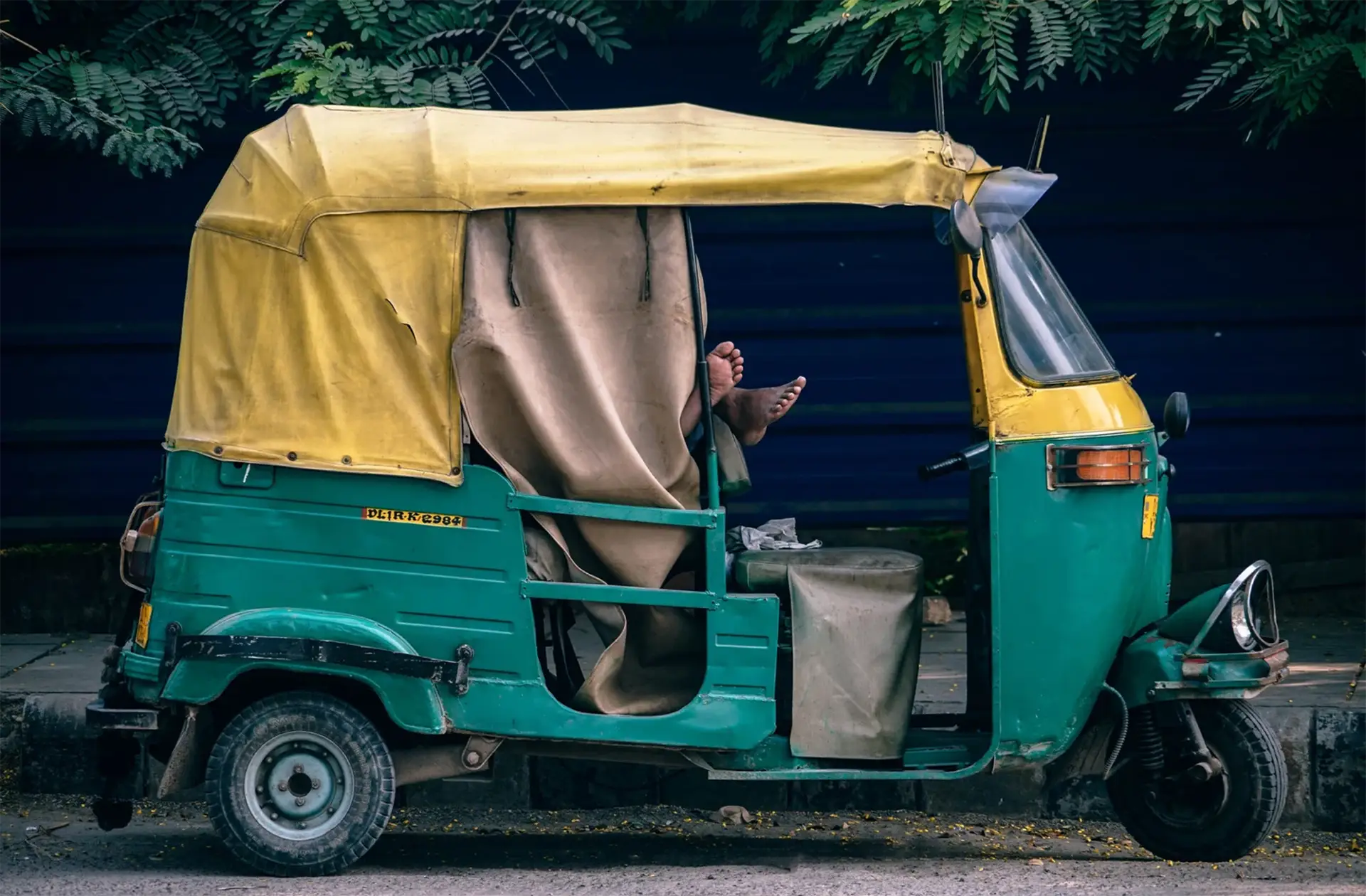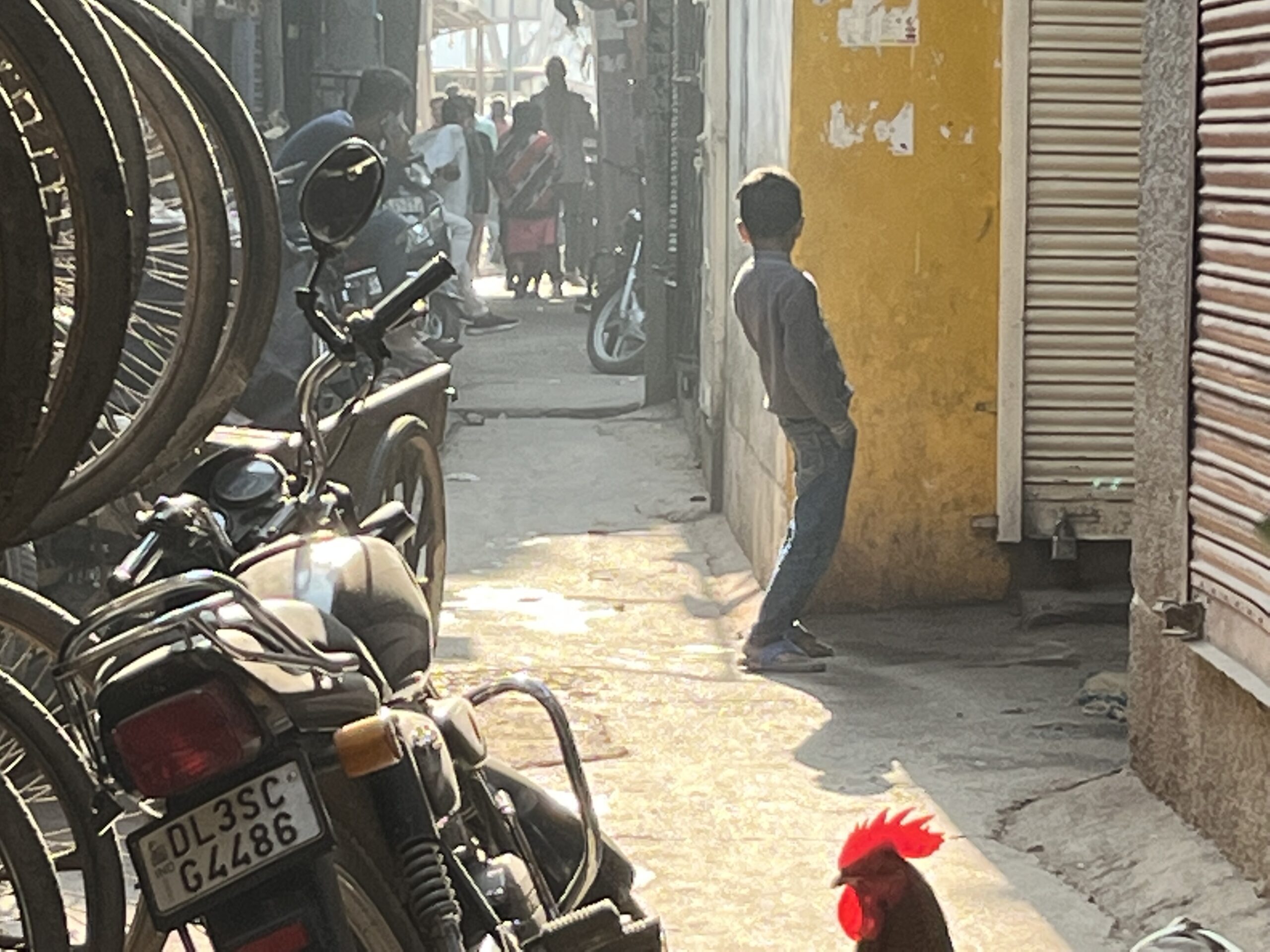“बेटिकट मुसाफ़िर”
आपका स्वागत करते हैं!
Welcome aboard
“Ticketless Travellers”!
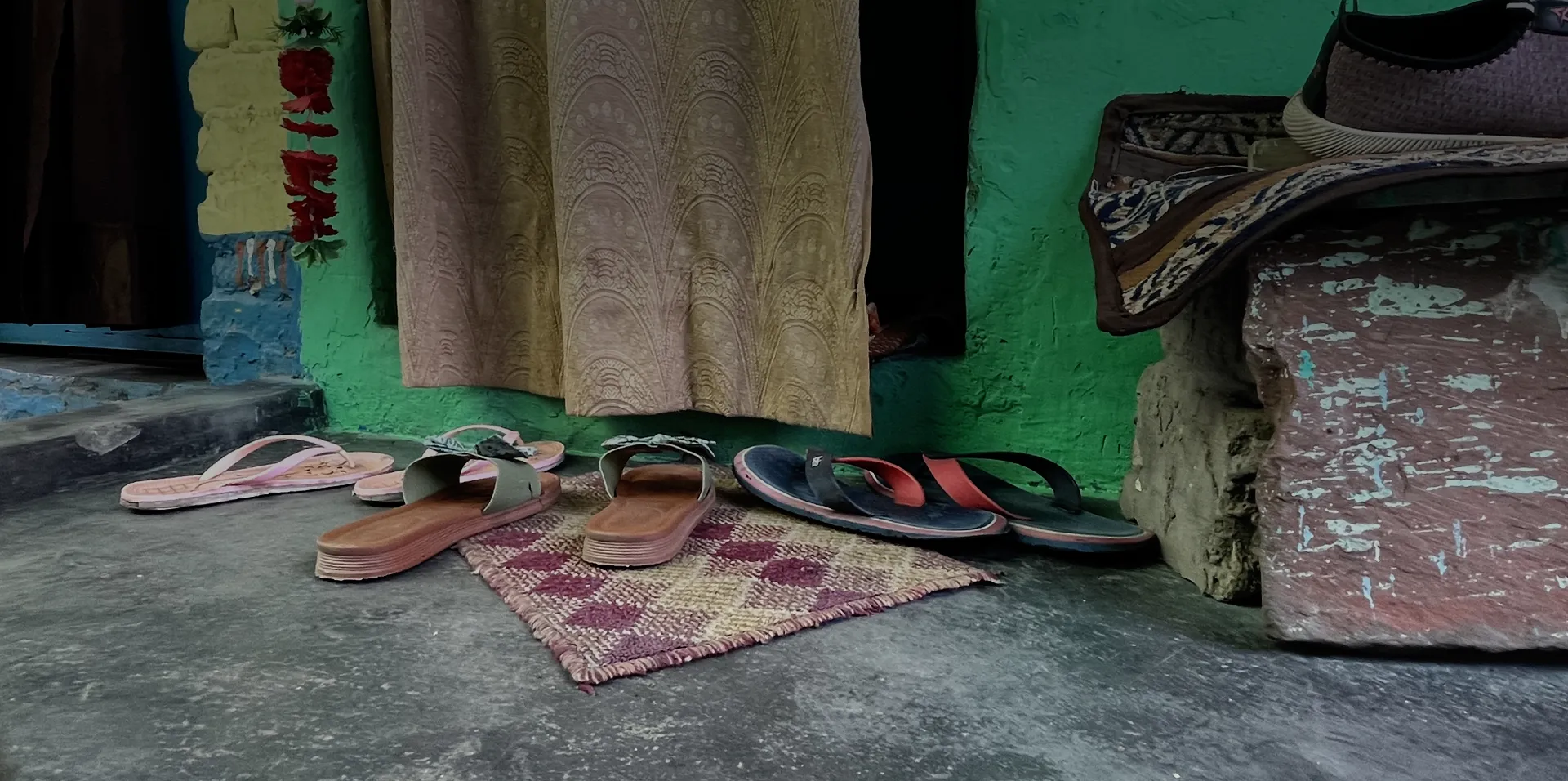
आप और हम अपनी दुनिया को देखते हैं, उसके बारे में सोचते-समझते-लिखते हैं। हम एक ही रेल में सवार हैं। मंज़िल एक ही है हमारी, अपने रोज़ाना के जीवन की बातें करना। हम दोनों में फ़र्क़ महज़ इतना है कि हम बेटिकट मुसाफ़िर हैं और आप पहले से पहुँचे हुए हैं, यूँ कहिए कि आप आते-जाते रहते हैं। हम अनारक्षित और अरक्षित हैं, आप आरक्षित और सुरक्षित।
You and I, we both see our world, reflect, contemplate and write about it. We are co-passengers on the same train. Our destination is the same, to write about the world we inhabit. The difference between us, is that we are ticketless travellers while you travel frequently on this train. While we travel unreserved and unprotected, you have a secure reserved seat.
अंकुर लेखक समूह
Ankur Writers Collective
तो बेटिकट मुसाफ़िर के साथ चल रहे इस सफ़र में आप सबका स्वागत है। हमारे हमसफ़र हैं : बड़े-बड़े विद्वान जिनके पास टिकट है और हैं ज़माने भर की डिग्रियाँ और उपाधियाँ। इनके साथ चल रहे हैं दिल्ली के‚ बेटिकट मज़दूर।
Welcome aboard “Ticketless Travellers”, a cheeky allegory which portrays a shared journey of unequals. Onboard are anthropologists with their training and other “tickets”; alongside them ride the “ticketless”, working class residents of Delhi.
इस सफ़र के दौरान आप दिल्ली को उन लोगों की कहानियों के नज़रिए से देखेंगे जिनकी मेहनत के बल पर यह शहर खड़ा है। ये दृष्टि और अभिव्यक्ति निहायत अनूठी है। उनके बीच की बातचीत और ख़यालों के लेन-देन से शायद एक तीसरी ही बात पैदा हो जाय जो कि अलग-अलग तजुर्बों को साथ रखने से होता ही है।
You will traverse the lanes of Delhi through stories told by writers whose labour built this city. This perspective and their expression is unique. The conversation and exchange of ideas between the co-passengers will create for you a unique expression which may emerge out of a give and take of such different life experiences.
मोहल्ले की छवियां
Glimpses of a Neighbourhood
- गलियों की भूलभुलैया Maze of lanes
- आंगनबाडी Kindergarten
- अव्यवस्थित जीवन Jumbled lives
- एक अलग तरह का घोड़ा A different kind of horse
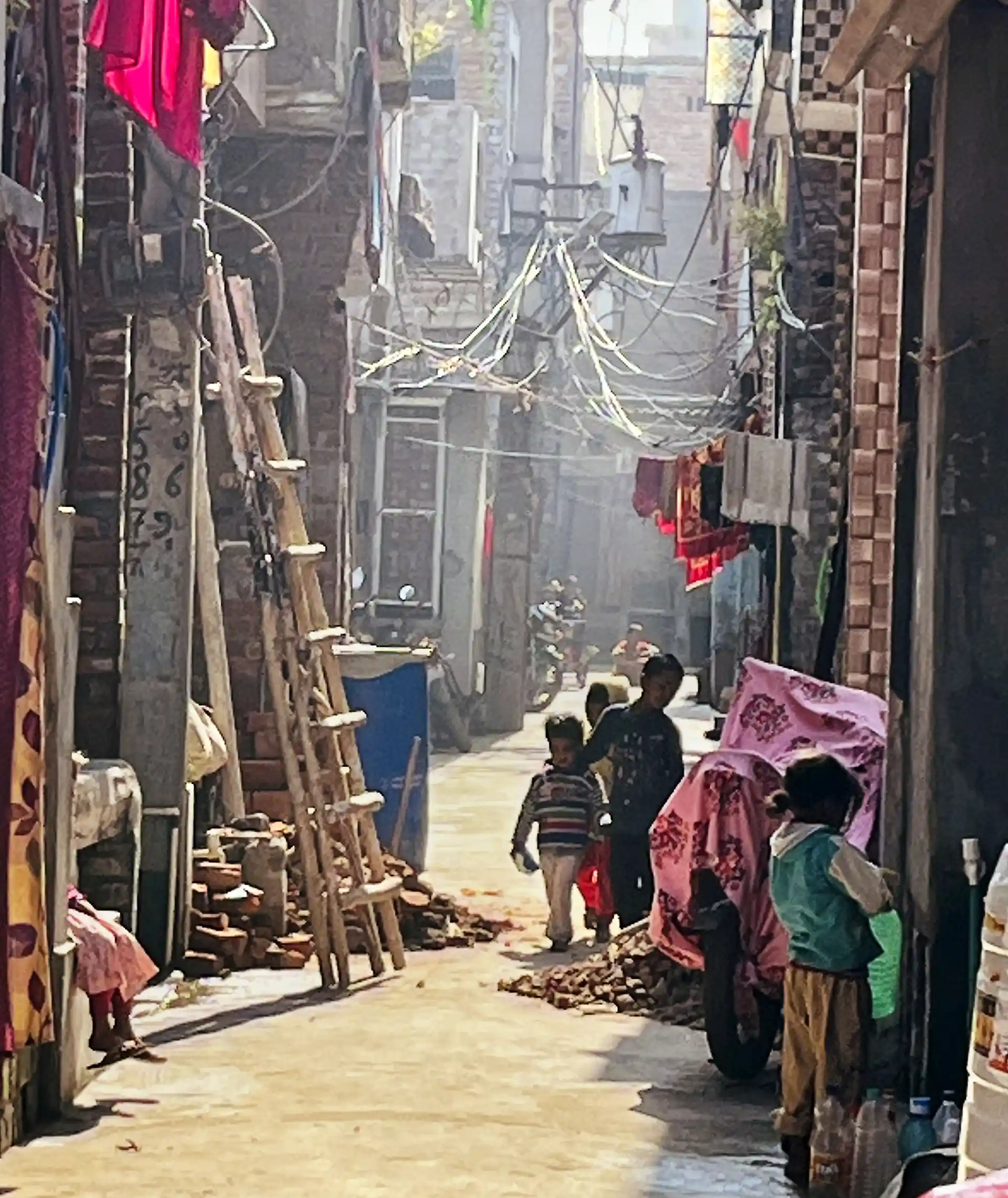
सावदा में अनेकों गलियां हैं । इतनी गलियां हैं कि हम किस गली मे रहते हैं ये पहचान पाना थोड़ा कठिन है । पर मुझे वह गली का ध्यान हमेशा रहता है जिसमे अंकुर है । कभी भी कोई पूछता मुझे, किताब हाथ में लिए जाते देख, की कहाँ जा रहे हो? “मैं”, खुश होकर कहता, अंकुर वाली गली । फ़ाइनल एक्साम्स ख़त्म हो गयें हैं और मैं ये सोचकर खुश हो रहा हूँ की अब मैं सब दोस्तों से मिलूंगा, कितना मज़ा आएगा, कितनी नई किताबें पढ़ूंगा और कितनी नई चीज़े लिखूंगा ।
Savda is a maze of lanes. So many that sometimes I forget my own. But one lane I never forget is the one with Ankur. As a child, when I would walk there, people would say, “where are you off to?” I would say with great pride, “I am going to the lane. The lane with the Ankur center.” My final exams are over at last and I have been waiting to go to Ankur. As I walk down with a new book tucked under my arm, I think of all my friends, of all the fun I will have, all the chats and all the new words I will write.
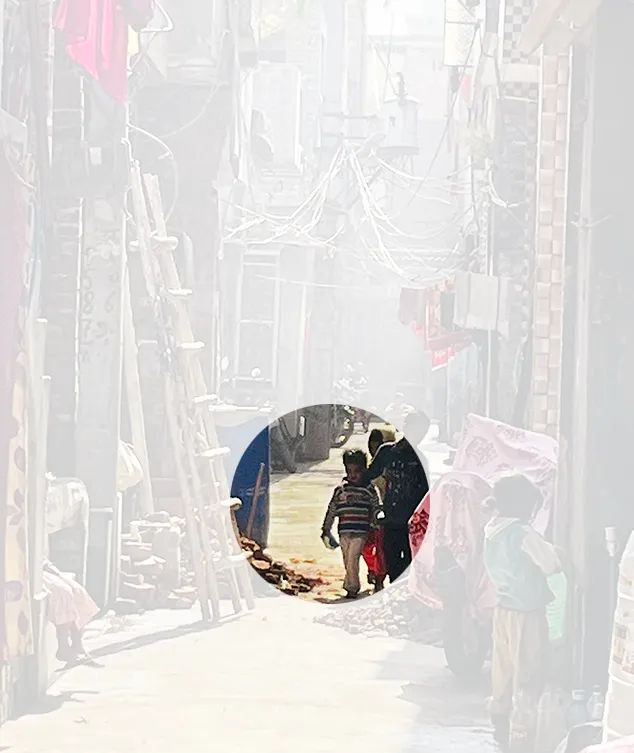
ये तस्वीर मुझे मेरे बचपन के उन दिनों की याद दिलाता है, जब मेरी चाहत नहीं होती थी रजाई से बहार कदम भी। तब मम्मी की डांट फटकार मुझे मेरे भाई बहनो के साथ, “हाथों में बर्तन लेकर गली में खड़ा कर देती थी। हम अपने अपने चप्पल पहनकर आंगनवाड़ी के तरफ चल पड़ते। ठण्ड और धुंध में हम भटकते भटकते आंगनवाड़ी के गेट तक पहुंच ही जाते। जबसे हमने चलना सीखा तब से हम हफ्ते में पांच दिन सुबह और दुपहर का खाना यही खाते हैं। जब आंगनवाड़ी में ताला लगा होता तो हम मुंह लटकाए, खाली बर्तन लिए वापस आते। पर ज़्यादातर हम खुशी-खुशी चप्पल फटकारते हुए वापस आते।
This picture takes me back to those cold winter mornings when I wanted to stay in the warm quilt forever. But mummy’s scolding would wake us up and along with my brothers and sisters, we would step out into the foggy lanes. We would slip on our flip flops, pick up our bowls and head towards the anganwadi. On foggy winter mornings, with bleary eyes and holding onto each other, we would meander through the lanes of Savda and somehow find our way to the gates of the anganwadi. Since we could walk, we had been coming here six days a week. We would get our morning breakfast and lunch here. On days when the anganwadi was shut, we would drag our feet home but on most days our flip flops would slap in tune to our happy mood and full bowls.
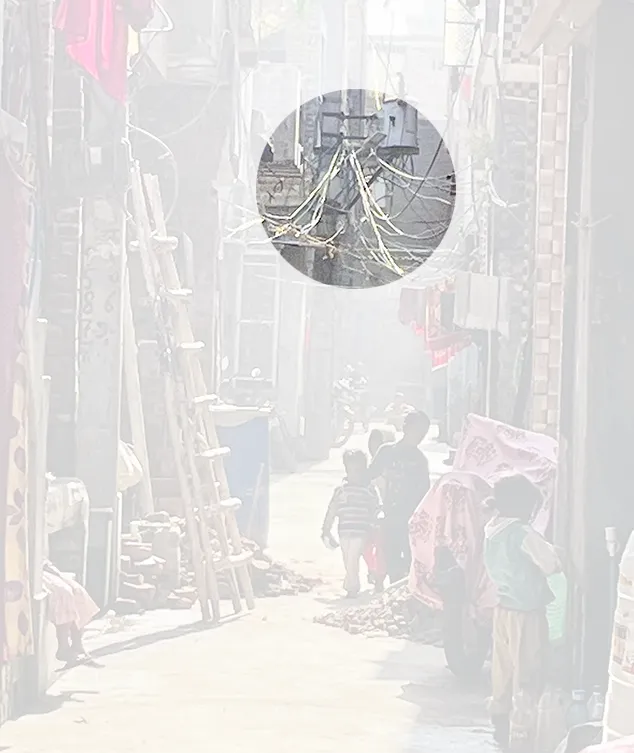
ये तंग सघन और व्यस्त गलियां , जहां बचपन यूं ही घूमते हुए बड़ा हो जाता है दस कदम पर बने आमने-सामने ये घर बिजली के तारों के कनेक्शन के साथ साथ रिश्तो के कनेक्शन भी बना लिया करते हैं बारह- बारह गज के कुछ टूटे, कुछ बनते, कुछ पक्के कुछ कच्चे, टाइल वाले, एक मंजिला, दो मंजिला अपना या किराए रायवाला इन ढेरों आशियानो से यह गलियां आकार लेती है । जहां उलझे तार कपड़े सुखाने की रस्सी, आंगन या चौखट बतियाने का केंद्र बन जाता । घर तो एक है पर खेलने को पूरी गली हमारी है यह गलियां , गलियां नहीं है कहने को यहां बसी आबादी की दुनिया को दर्शाती है ।
In these narrow, dense and busy lanes of Savda, childhood unknowingly walks into adulthood. Much like the jumble of electrical wires, these houses facing each other, connect through a fine mesh of relationships. Some of these houses are broken, some being rebuilt, some temporary, some permanent, some tiled, some with one floor, some two, some owned, some on rent… all these dwellings and dreams give shape and meaning to these lanes. It is true that we have just one home but we have the entire lane for a playground. These lanes are not just our home but they represent our world.
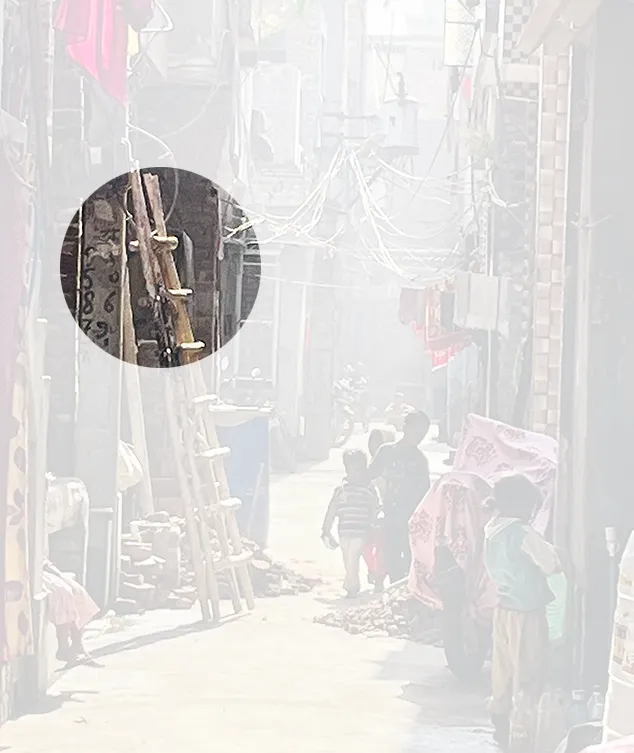
सावदा में इसे जीना नहीं, घोड़ियां बोलते है। यह दो जीने के मेल से बनती है। जब किसी दीवार या छत में पेंट करना होता है तो इसको बिना किसी सहारे के कही भी खड़ा कर सकते है। उसी में पेंट का डिब्बा टांग कर दीवार या छत में पेंट करते समय उसी में चढ़े होते है। और छत में नक्काशी और डिजाइन बनाते है। सावदा के लिए यह बास का जीना शुरू से आज तक जगह को बनाने और सजाने में कारीगर की साथी बनती है।
In Savda, this isn’t called a ladder, it is called a ghorian (horse). It is constructed by tightly tying together two ladders at one end with jute twines. While painting a house or a wall, you can prop up the horse anywhere without any support. A bucket of paint can be hung with great efficiency on one of its protruding prongs. These horses are a workman’s companion, who together build and transform a bare resettlement colony into a place people call home.
हमारे बारे में
A film about us
ऑफिसियल ट्रेलर| निकल पड़े हैं बेटिकट मुसाफ़िर…| अंकुर लेखक समूह
Official Trailer| ‘Ticketless Travellers on the Move’| Ankur Writers Collective
